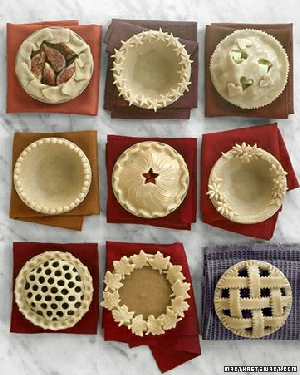


Here are the fundamentals:
Always remember, flaky pie crusts need to stay COLD. It is a good idea to chill the surface and any tools you will be using. Its also a good idea to put the flour in the freezer for 10-20 minutes before working it. All ingredients should be kept chilled when not in use.
Crusts can be made with butter or shortening. For a rich flavor and deep, golden texture, go with butter. Shortening is easier to work with, but crust made with shortening are much less flavorful. For this reason, most recipes that use shortening also use butter. (For simplification, the instructions on this page will assume an all-butter recipe.)
And remember: KEEP EVERYTHING COLD!
Before you start, there are few things to know:
Sift the flour before you measure it before the crust. (You will sift, measure, sift.) You can sift he flour into a bowl, then put the bowl in the fridge or freezer until you're ready for it.
Start with chilled or frozen butter. Cut the butter into small, pea-sized cubes.
The water (or any other liquid) used should be ice-cold, not right from the tap.
If using eggs, take them directly from the fridge, and beat them into the measured water. Do the same with any other liquid.


“When you have confidence, you can have a lot of fun. And when you have fun, you can do amazing things.”
~ Joe Namath

Store-bought pie crusts are mediocre at best. And everyone knows the crust is the keystone of any great pie. And a homemade, tender, flaky crust will have everyone raving about your pies for years. It's not difficult, but it does take precision and practice.
STEP 1: SIFT THE DRY INGREDIENTS. First, the flour and all dry ingredients should be sifted together in a bowl.
STEP 2: CUT THE FAT. To mix the butter and the flour (“cut the fat”), first add the prepared butter to the flour mixture by sprinkling the pieces evenly around the bowl. Then there are several ways to cut the fat:
By hand: Pick up a small piece of butter and some flour with your fingertips. Work the butter into the flour by rubbing small pieces of the butter and flour in between your fingers and thumb. BE GENTLE! Reach into the bottom of the bowl from time to time and redistribute the ingredients.
Using two table knives: With the blades almost touching each other, move knives back and forth in opposite directions in a parallel cutting motion.
With a pastry blender: Work up and down in the mixture, rolling on either side of its edge.
Food processor: Use the metal blade and add the butter to the work bowl containing the flour and any other dry ingredients. Quickly pulse it one-second at a time to combine the dry ingredients with the butter.
Stand Mixer: This is the easiest way. Sift the flour into the work bowl, then add the butter. Use the pastry paddle. Start at a low speed and slowly speed it up if you need to.
When the mixture is properly mixed, it will be slightly yellow, with a mealy or crumbly texture, and the butter pieces should be barely visible.
STEP 3: COMBINE THE LIQUIDS WITH THE BUTTER/FLOUR MIXTURE. Mix in the minimum of water and other liquids with the flour and butter mixture, so that it still looks dry and just barely holds together when pinched together. You don't want a wet, sticky dough. It is very important not to overwork the dough.
Make sure the butter or fat is still cold in the flour mixture before adding water or liquids. If it’s not, chill it before continuing.
Start by sprinkling water (or liquid mixture) over the butter/flour mixture while tossing it gently with a fork or other tool. The less liquid you use, the more tender your pie crust will be. Be sure to (gently!) work the liquid evenly through the whole butter/flour mixture. (TIP: use a spray bottle to add water - this ensures even application and helps prevent over-watering.)
Use the Pinch Test to determine when you should stop.
STEP 4: LET THE DOUGH SET. Shape the mixed dough into a flatted ball as soon as it's made (for a 2-crust pie, divide the dough into 2 parts – 2/3 and 1/3 portions – first), wrap it in wax paper, then chill it in the refrigerator for 1-24 hours. The shape helps to chill it faster (and evenly) and makes rolling faster because of the round and flat shape. [DO NOT SKIP THIS STEP! Chilling allows the fat to re-harden so that the dough is firm when rolled and helps to evenly distribute the moisture. It also allows the gluten strands developed during mixing to relax, lessening pie crust shrinkage during baking.]
To make the ball, gently press the dough together with the cupped palms of your hands. Rotate the dough until it forms the right shape. Be careful not to overwork the dough--it should just stick together and will not be smooth. If the dough does not hold together, it is too dry. If it is too mushy, the dough is too wet.
When you're done forming the flattened ball, place it on a large piece of waxed paper, wrap in an airtight plastic bag, and chill it in the refrigerator.
STEP 5: ROLL OUT THE DOUGH. Remove the dough ball from the refrigerator and allow it to sit at room temperature until it softens enough to be malleable. Do not let it get too warm. Always work quickly so the dough doesn't have a chance to soften. Lightly dust a work surface and rolling pin with pinches of flour. Place the dough ball in the center of the flour dusting, then lightly sprinkle more pinches of flour on top (or roll the dough between 2 sheets of wax paper). [TIP: If you use wax paper to roll out your pie crust, dampen your surface before applying the wax paper to prevent the paper from sliding around.] Roll the dough out to a circle (3-4 inches in diameter wider than your pie pan, 1/8 inch thick).
FOR EVEN ROLLING, buy 1/8” wooden dowels. (You can find them at any hardware store.) Place them on either side of the dough, spaced out to the width of your desired crust diameter. Place the rolling pin on top and roll the dough until it is even with the top of the dowel or 1/8-inch thick. Make sure you rotate the dough.
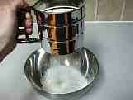
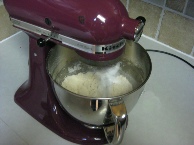
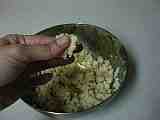
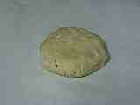
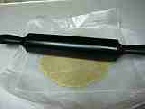

STEP 6: TRANSFER THE CRUST. (There is so much fat in a piecrust, pans usually do not need to be greased or floured.) There are several ways to transfer the crust.
1. FOLD & LIFT THE DOUGH: Gently lift up the edges and fold it in half (slide both hands underneath to support it). Lift the dough and position the fold over the center of the pie pan, then gently unfold and arrange into place.
2. USE A ROLLING PIN: Center a floured rolling pin on the edge of the crust. Lightly roll it over the crust and at the same time pick up the edge and support the dough as you gently wrap it around the pin. Keep rolling until all of the dough is rolled on the pin. Then, then drape the loose end over one edge of the pan and gently unroll it, lowering it into the pan.
3. INVERT: This is the easiest way. Invert your pie pan and place it in the middle of the dough (if you rolled it between wax paper, remember to remove the top paper first!) and, while holding one hand under the middle of the dough, with the other inside the pie pan, flip both over. The dough should be draped in the pan. Let the dough fall gently into place.

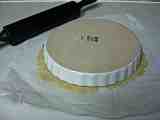
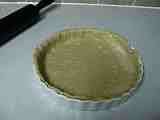
STEP 7: PLACE THE TOP CRUST (FOR DOUBLE-CRUST PIES). Moisten the rim of the pie with a small amount of water (or an egg wash). Gently lay the top crust on top, careful not to pull or stretch it. It may be helpful to leave it on the wax paper as you flip it over and center it in the pie. Once the top crust is in place, crimp the ends of the strips firmly to the rim of the pie (with a fork, your finger, or specialized pie tool) sealing the two crusts together, and trim away any excess dough.
If you use a solid top crust (as opposed to a lattice), you will probably need to cut a few steam vents in the top. Simply use a sharp knife and cut 3 or 4 slits, 2 or 3 inches long in the middle of the pie.


Fancy up your pie by using a lattice top, or adding decorative shapes - cookie cutters are an excellent tool for making top crust pie art.
If you're Martha Stewart, you can make a pie look like this.
